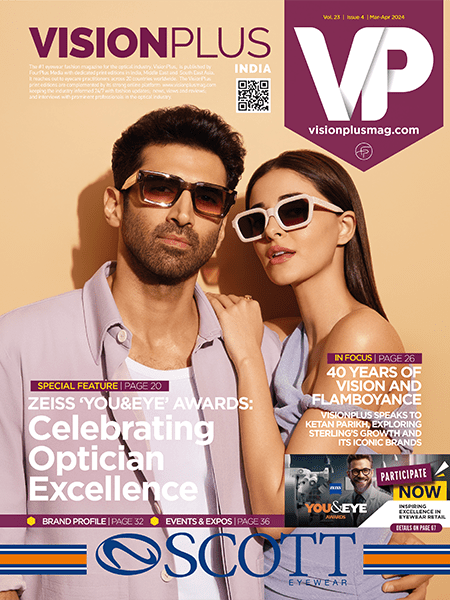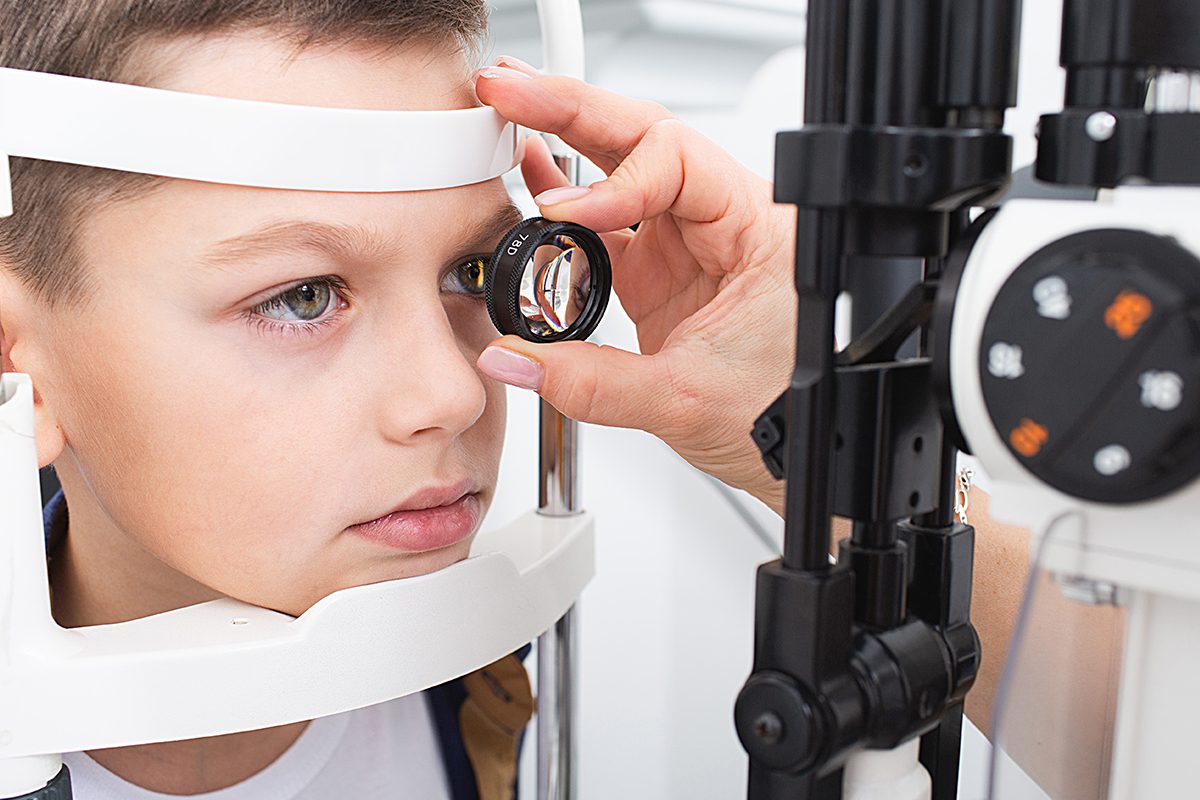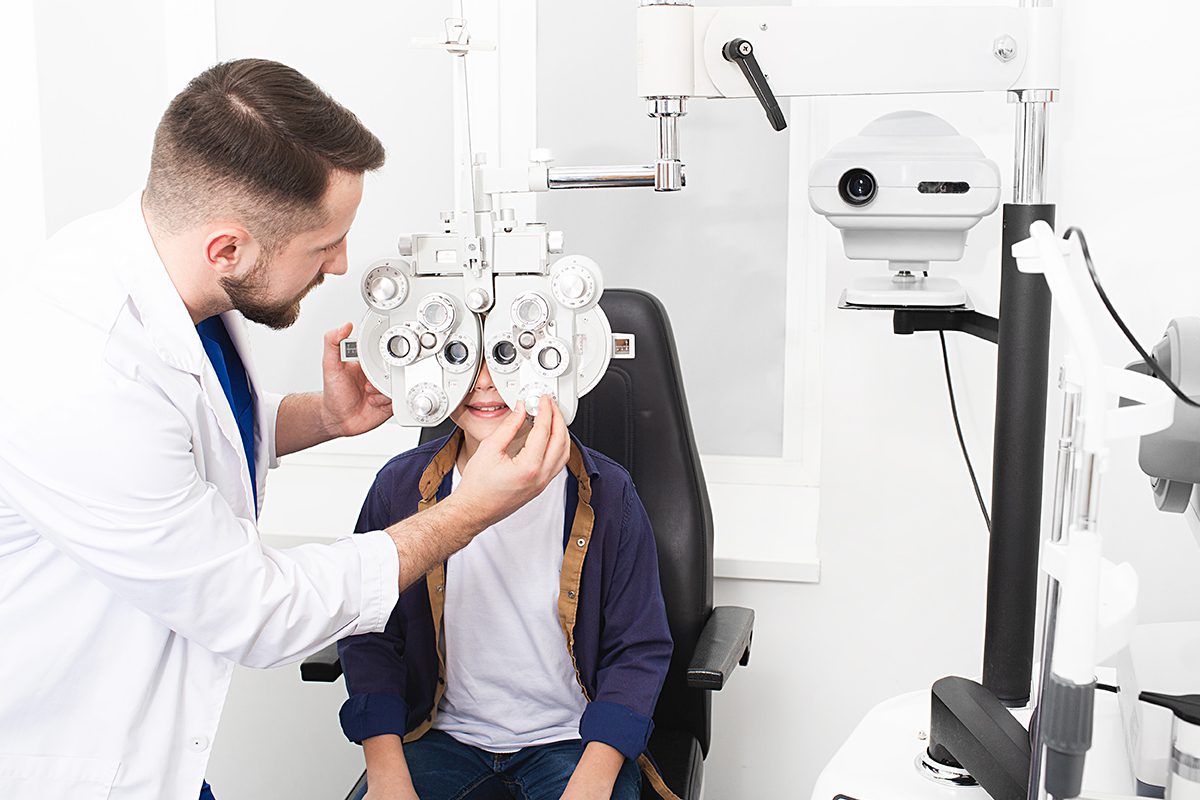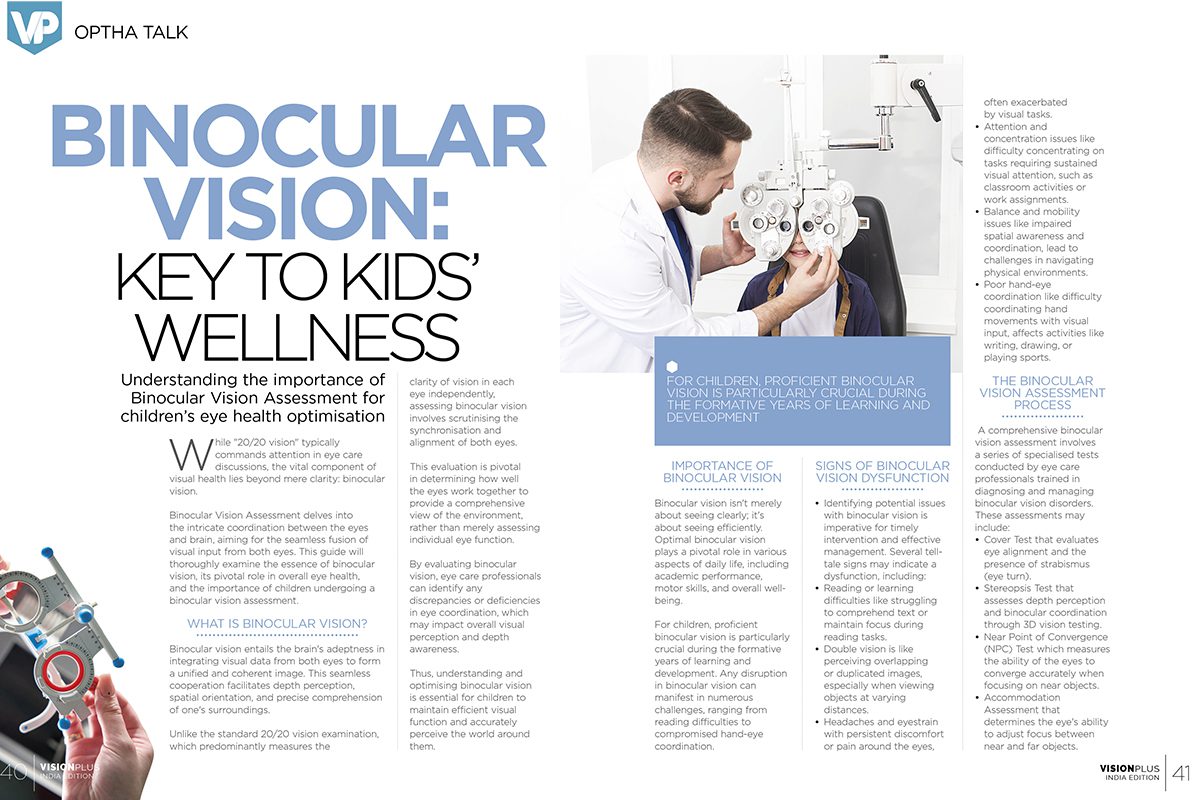
Binocular Vision: Key To Kids’ Wellness
Understanding the importance of Binocular Vision Assessment for Children’s eye health optimisation
While "20/20 vision" typically commands attention in eye care discussions, the vital component of visual health lies beyond mere clarity: binocular vision.
Binocular Vision Assessment delves into the intricate coordination between the eyes and brain, aiming for the seamless fusion of visual input from both eyes. This guide will thoroughly examine the essence of binocular vision, its pivotal role in overall eye health, and the importance of children undergoing a binocular vision assessment.
What is Binocular Vision?
Binocular vision entails the brain's adeptness in integrating visual data from both eyes to form a unified and coherent image. This seamless cooperation facilitates depth perception, spatial orientation, and precise comprehension of one's surroundings.
Unlike the standard 20/20 vision examination, which predominantly measures the clarity of vision in each eye independently, assessing binocular vision involves scrutinising the synchronisation and alignment of both eyes. This evaluation is pivotal in determining how well the eyes work together to provide a comprehensive view of the environment, rather than merely assessing individual eye function.
By evaluating binocular vision, eye care professionals can identify any discrepancies or deficiencies in eye coordination, which may impact overall visual perception and depth awareness. Thus, understanding and optimising binocular vision is essential for children to maintain efficient visual function and accurately perceive the world around them.
Importance of Binocular Vision
Binocular vision isn't merely about seeing clearly; it's about seeing efficiently. Optimal binocular vision plays a pivotal role in various aspects of daily life, including academic performance, motor skills, and overall well-being. For children, proficient binocular vision is particularly crucial during the formative years of learning and development. Any disruption in binocular vision can manifest in numerous challenges, ranging from reading difficulties to compromised hand-eye coordination.
Signs of Binocular Vision Dysfunction
Identifying potential issues with binocular vision is imperative for timely intervention and effective management. Several tell-tale signs may indicate a dysfunction, including:
- Reading or learning difficulties like struggling to comprehend text or maintain focus during reading tasks.
- Double vision is like perceiving overlapping or duplicated images, especially when viewing objects at varying distances.
- Headaches and eyestrain with persistent discomfort or pain around the eyes, often exacerbated by visual tasks.
- Attention and concentration issues like difficulty concentrating on tasks requiring sustained visual attention, such as classroom activities or work assignments.
- Balance and mobility issues like impaired spatial awareness and coordination, lead to challenges in navigating physical environments.
- Poor hand-eye coordination like difficulty coordinating hand movements with visual input, affects activities like writing, drawing, or playing sports.

The Binocular Vision Assessment Process
A comprehensive binocular vision assessment involves a series of specialised tests conducted by eye care professionals trained in diagnosing and managing binocular vision disorders. These assessments may include:
- Cover Test that evaluates eye alignment and the presence of strabismus (eye turn).
- Stereopsis Test that assesses depth perception and binocular coordination through 3D vision testing.
- Near Point of Convergence (NPC) Test which measures the ability of the eyes to converge accurately when focusing on near objects.
- Accommodation Assessment that determines the eye's ability to adjust focus between near and far objects.
- Ocular Motility Exam which examines the range and smoothness of eye movements in different directions.
- Visual Field Testing that checks peripheral vision and visual awareness beyond central fixation.
The Role of Binocular Vision in Post-Trauma Recovery
Binocular vision dysfunction can also arise following head injuries, such as concussions or traumatic brain injuries. In these cases, children may experience a constellation of symptoms collectively known as Post Trauma Vision Syndrome (PTVS). Proper assessment and management of binocular vision dysfunction are integral components of the rehabilitation process for children recovering from such injuries.
Treatment and Management Options
Once diagnosed, binocular vision disorders can often be effectively managed through various interventions tailored to individual needs. These may include-
- Vision Therapy: A structured program of eye exercises and activities aimed at improving binocular coordination and visual processing skills.
- Prism Lenses: Prescription lenses incorporating prismatic corrections to alleviate symptoms associated with binocular vision dysfunction.
- Eyewear Modifications: Customised glasses or contact lenses designed to optimise visual alignment and clarity.
- Collaboration with Other Specialists: Coordinated care with neurologists, occupational therapists, or developmental specialists may be beneficial for comprehensive management, particularly in cases involving neurological or developmental conditions.
Assessing binocular vision in children is a vital component of thorough eye care, encompassing more than just visual clarity. It delves into the complex relationship between the eyes and the brain. Detecting signs of binocular vision issues and promptly seeking evaluation is crucial for preserving visual health and overall wellness.
Remember, optimal vision isn't solely about sight; it's about perceiving the world with seamless harmony. Therefore, it's imperative to recognise the nuances of binocular vision dysfunction. This proactive approach ensures that any discrepancies in how the eyes work together are addressed promptly. Such diligence not only enhances visual acuity but also fosters a deeper understanding of the world around us.
By prioritising binocular vision assessment, children prioritise their long-term ocular health and enrich their experiences. Ultimately, clear vision encompasses more than just seeing objects—it's about integrating visual information effortlessly, contributing to a fuller and more vibrant life.







